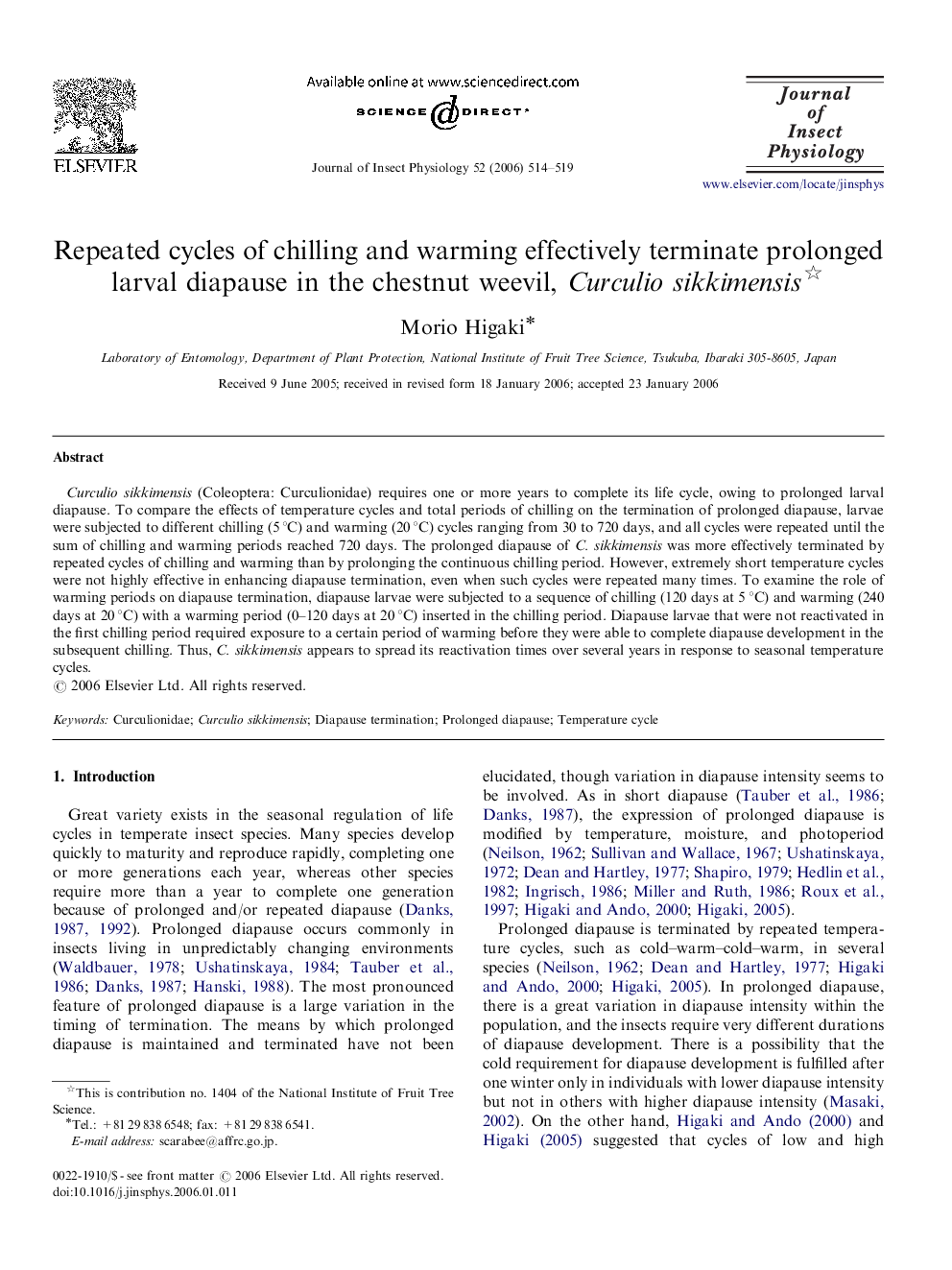| کد مقاله | کد نشریه | سال انتشار | مقاله انگلیسی | نسخه تمام متن |
|---|---|---|---|---|
| 2841789 | 1165441 | 2006 | 6 صفحه PDF | دانلود رایگان |
عنوان انگلیسی مقاله ISI
Repeated cycles of chilling and warming effectively terminate prolonged larval diapause in the chestnut weevil, Curculio sikkimensis
دانلود مقاله + سفارش ترجمه
دانلود مقاله ISI انگلیسی
رایگان برای ایرانیان
کلمات کلیدی
موضوعات مرتبط
علوم زیستی و بیوفناوری
علوم کشاورزی و بیولوژیک
دانش حشره شناسی
پیش نمایش صفحه اول مقاله

چکیده انگلیسی
Curculio sikkimensis (Coleoptera: Curculionidae) requires one or more years to complete its life cycle, owing to prolonged larval diapause. To compare the effects of temperature cycles and total periods of chilling on the termination of prolonged diapause, larvae were subjected to different chilling (5 °C) and warming (20 °C) cycles ranging from 30 to 720 days, and all cycles were repeated until the sum of chilling and warming periods reached 720 days. The prolonged diapause of C. sikkimensis was more effectively terminated by repeated cycles of chilling and warming than by prolonging the continuous chilling period. However, extremely short temperature cycles were not highly effective in enhancing diapause termination, even when such cycles were repeated many times. To examine the role of warming periods on diapause termination, diapause larvae were subjected to a sequence of chilling (120 days at 5 °C) and warming (240 days at 20 °C) with a warming period (0-120 days at 20 °C) inserted in the chilling period. Diapause larvae that were not reactivated in the first chilling period required exposure to a certain period of warming before they were able to complete diapause development in the subsequent chilling. Thus, C. sikkimensis appears to spread its reactivation times over several years in response to seasonal temperature cycles.
ناشر
Database: Elsevier - ScienceDirect (ساینس دایرکت)
Journal: Journal of Insect Physiology - Volume 52, Issue 5, May 2006, Pages 514-519
Journal: Journal of Insect Physiology - Volume 52, Issue 5, May 2006, Pages 514-519
نویسندگان
Morio Higaki,